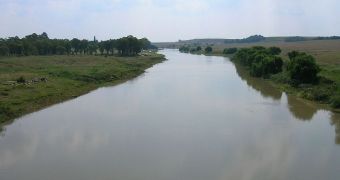A group of investigators was recently able to show without a doubt that an ancient meteorite impact took place around the Vaal River, in South Africa. Details of the ancient catastrophe were preserved in stones at the affected locations, scientists say.
Using grains of the chemical compounds quartz, zircon, and monazite as a starting point, researchers at the University of Puerto Rico and their colleagues were able to trace back the unique record back to times immemorial.
The work was conducted with funds provided through the Minority Institution Research Support Program, which is operated by the NASA Astrobiology Institute (NAI), SpaceRef reports.
“The sand samples were collected from the channel of the Vaal River near the two billion-year old Vredefort Dome impact structure, where impact-shocked minerals are known to occur in rocks,” NASA said recently in a press release.
UPR investigators, working together with colleagues at the University of Wisconsin, in the United States, were able to use scanning electron microscopy (SEM) imaging on the grains, in order to analyze how they endured the various geological process that affected them over the years.
After an impact takes place, the ensuing crater begins degrading, subjected to the combined action of the elements. Uplift, wind and water erosion, and sediment accumulations or subtractions are just a few of the influencing factors.
Regardless of that, the SEM study was able to identify the the unique mineral shock-deformations that were produced when the impact took place. Scientists say that this is the first documented evidence of such deformations surviving geological processes.
One of the most important implications of the new research is that details of ancient impacts can be kept inside sedimentary rocks and mineral grains even billions of years after the actual catastrophe took place.
In fact, the team says, details can be derived from the ground after the crater has disappeared completely. Geologists are convinced that they only know a few of the craters that once dotted the surface of the planet.
In a paper published in the current issue of the esteemed scientific journal GSA Bulletin, the group argues that a new method of conducting research on the geological time scale has been developed.
Missing impact events are now theoretically easier to find, and this holds great implications for theories seeking to show what happened during mass extinctions, and also to explain how life developed.

 14 DAY TRIAL //
14 DAY TRIAL //